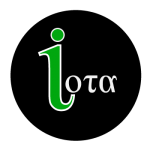IOTA event showcases Progress of IoT

 Last month I attended the IOTAconf—the Internet of Things Conference in San Francisco—that piggybacks on HTML5Devconf, a bigger, older, and better-known event. Although the show itself was a no-frills affair, with limited staffing—it still felt very positive; the discussions at IOTA touched on everything from IoT architectures to AI algorithms and Big Data for devices.
Last month I attended the IOTAconf—the Internet of Things Conference in San Francisco—that piggybacks on HTML5Devconf, a bigger, older, and better-known event. Although the show itself was a no-frills affair, with limited staffing—it still felt very positive; the discussions at IOTA touched on everything from IoT architectures to AI algorithms and Big Data for devices.
The IoT scene is still ramping up as people grapple with what it will mean for them and consider how to apply technologies to the opportunities it presents. I was certainly happy with the attendance and interest shown at my own presentation, which represented a compact version of the talk I delivered earlier at Exchange.
Node.js at Progress—a Bridge to IoT
Specifically, I discussed some Node.js examples involving Progress. The first example touched on iBeacon, Apple’s indoor proximity system that can notify nearby iOS 7 devices of their presence. In this case, iBeacon is detected by a smartphone and we record data using Node.js on Modulus. Then, navigating a firewall, we act on some Philips Hue personal wireless lighting devices that are controlled via Node. This example showcased how Node.js can be used to detect and record sensors, and then control activators.
The second example was our customer Jungle Lasers which pulls GPS data from a snow plow vehicle. That data is recognized by a Node.js service and stored in a MongoDB database within Modulus. This is then exported into a Rollbase App as an external data object. The Rollbase App combines that information with other data sources and presents the information into dashboards, and, through REST calls, into a single-page application (SPA) created using AngularJS.
These two examples really get at the heart of how IoT can permeate new areas and create valuable functionality—especially when the right technologies make it affordable and easy.
At Progress, we are very focused on IoT because it is rapidly following the same evolutionary curve taken by mobile. Just as today you can’t consider an application project without considering mobile, in the near future, applications will need to be equally adaptable to IoT.
Fortunately, we are in a position to provide an outstanding spectrum of tools that cover the front end and back end of the IoT environment. We are fully on board with IoT, and with Modulus and Node.js offering a bridge to IoT, the route to the future is already well paved. Node.js is great for data-intensive, real-time applications and for API-first architectures. And with Modulus, you have a complete technology stack for developers.

